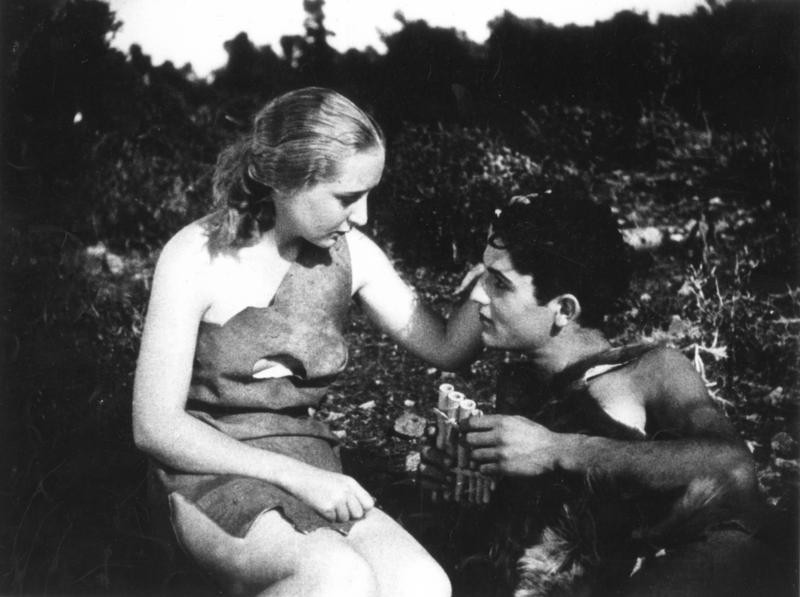της Maria Komninos
Πρώτη δημοσίευση: Journal of the Hellenic Diaspora, Vol.37.1&2, Pella, 2011, pp. 75-89
The delayed modernization of Greek society resulted in the delayed adoption of the icons of international cinema during the period of silent movies and during the era of the talkies. Patriarchy in Greece and a weak film industry promoted depictions of women that were either folkloric or stereotypical. When film stars such as Louise Brooks and Greta Garbo enjoyed international fame, their counterparts in Greek Cinema were Aliki Theodoridi, Frida Pupelina, and Lucy Matli. The inexperience and charm of some of these Greek film stars made them look appealing even to foreign audiences during the era of silent film.
Greek cinema during the interwar period, however, did not witness anything like the emergence of vamps or flappers that appeared in Hollywood. Even in post-war years, Greek commercial cinema mainly promoted the image of the naughty rich girl who, instead of pursuing a career, was focused on finding a good husband. Films that promoted the image of independent Greek women struggling against the prejudices of the male dominated society were few and far between. For example, Melina Mercouri in Stella and Never on Sunday, or even Irene Papas in Zorba the Greek were the exception rather than the rule. It was not until 1974 with the restoration of democracy that the filmmakers - especially those who belonged to the New Greek cinema - began to focus on different types of women.
By the 1990s, more Greek women filmmakers were able to produce feature films and create a variety of interesting female characters. Films such as Katerina Evangelakou’s Think It Over / Tha to Metanioseis (2004), Kleoni Flessa’s Let’s go for an Ouzo / Pame gia Ena Ouzo (2002) and Olga Malea’s Risotto (2000) present tragicomic stories of women who are trying to cope with the conflicting demands of their career and personal happiness.
A completely different image is projected by two other types of heroines, Stella and Irena in Nikos Panagiotopoulos’ The Edge of Night /Afti i Nihta Menei (2000) and Kyriakos Katzourakis’ The Road West / O Dromos pros ti Disi (2003) respectively. The heroines in these two films are victimized or make a narrow escape from the profiteers of human trafficking. In the case of Pantelis Voulgaris’ Brides / Nifes (2003), written by Ioanna Karystiani, human trafficking recedes into the background as the story focuses on mail-order brides from Greece and the Balkans who travel to the United States in the early 1920s to meet their prospective husbands. Stella Theodorakis’ Close So Close / Para Ligo, Para Ponto, Para Triha (2002) and Constantina Voulgaris’ Valse Sentimentale / Vals Sentimental (2007) also merit close attention for painting two different portraits of post-feminist flâneurs in a chaotic Athens.
Εικόνα εξωφύλλου: Δάφνις και Χλόη, Ορέστης Λάσκος, 1931
Σχετικές ταινίες:





